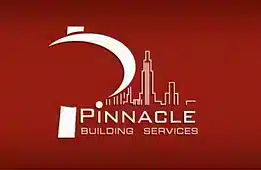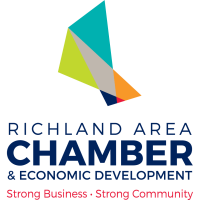Eco-friendly practices in facilities management are not just good for the environment, but they also make good business sense. They represent an investment in our planet’s future and the long-term success of the organization. There are many ways to make your facility more eco-friendly, but where to start? Enter Sustainable Facilities Management! By understanding and implementing this practice, any facilities manager will be able to guide their organization into a more eco-friendly future.
Understanding the Basics of Sustainable Facilities Management
Sustainable Facilities Management (SFM) is a practice that involves managing buildings, properties, and operations in a manner that minimizes their environmental impact while improving efficiency and effectiveness. Here are its core principles:
- Stewardship: A commitment to protecting and enhancing the environment for future generations. This means managing resources wisely, minimizing waste, and reducing the environmental footprint of the facility.
- Life Cycle Thinking: This involves considering the entire life cycle of products and services, from procurement to disposal, to minimize their environmental impact. It includes selecting materials and products based on the environmental cost of their entire lifespan, not just the initial purchase price.
- Efficiency: The principle of doing more with less. This could mean using energy and water more efficiently, optimizing space usage, or improving productivity through better work environments.
- Health and Well-being: Creating healthy and productive indoor environments. This can include ensuring good indoor air quality, access to natural light, comfortable temperatures, and a pleasant working environment.
- Resilience: Building resilience into facilities management practices to respond to changes and disruptions, such as climate change or resource scarcity. This could involve implementing measures to reduce reliance on non-renewable resources or designing spaces that can adapt to changing needs.
- Transparency: Being open and transparent about sustainability performance. This includes measuring and reporting on sustainability metrics and communicating these to stakeholders.
- Continuous Improvement: Commitment to ongoing learning and improvement. This involves regularly reviewing and updating policies and practices, and staying abreast of new technologies and approaches that can enhance sustainability.
- Engagement: Engaging with stakeholders, including employees, customers, suppliers, and the local community, to understand their needs and expectations, and to involve them in sustainability initiatives.
The Role of a Facilities Manager in Promoting Sustainability
Facilities Managers play a vital role in promoting eco-friendly practices within an organization. Here are some of their key responsibilities in this regard:
- Developing and Implementing Sustainable Policies: One of the primary tasks of a Facilities Manager is to develop and implement sustainable policies for the facility. This includes creating guidelines for energy use, waste management, water conservation, and procurement.
- Promoting Energy Efficiency: A significant part of a Facilities Manager’s role involves promoting energy efficiency. This can be achieved by replacing old appliances and systems with energy-efficient alternatives, installing renewable energy systems, and optimizing energy use.
- Managing Waste: Facilities Managers are responsible for implementing effective waste management strategies. This includes reducing waste, promoting recycling, and ensuring responsible waste disposal.
- Water Conservation: They should promote water conservation through steps like installing water-saving fixtures, implementing rainwater harvesting systems, and encouraging mindful water usage.
- Sustainable Procurement: Facilities Managers are often involved in procurement decisions and should prioritize purchasing goods and services that are environmentally friendly.
- Staff Training and Awareness: It’s also crucial for Facilities Managers to educate staff about sustainable practices and encourage them to participate in eco-friendly actions.
- Monitoring and Reporting: Facilities Managers should monitor the effectiveness of implemented sustainability initiatives, collect data, and report on sustainability performance to stakeholders.
- Keeping Up with Green Standards and Regulations: They need to stay updated with current environmental regulations and green building standards to ensure the facility remains compliant.
- Promoting Sustainable Design: When involved in design or renovation projects, Facilities Managers should advocate for sustainable design principles, such as using sustainable materials and maximizing natural light.
By fulfilling these responsibilities, Facilities Managers can significantly contribute to making their facilities more sustainable and less harmful to the environment. By taking these steps, they can also significantly enhance operational efficiency by reducing energy consumption and waste, leading to substantial cost savings. This creates healthier work environments that boost productivity and extend the lifespan of facilities and equipment. Furthermore, this focus fosters innovation and risk management, providing a competitive advantage and ensuring regulatory compliance.
Key Eco-Friendly Practices for Facilities Managers
Facilities Managers can adopt several key eco-friendly practices to support sustainability and reduce the environmental impact of their buildings.
- Energy Efficiency: Implement energy-saving measures such as using energy-efficient appliances, installing LED lighting, optimizing HVAC systems, and potentially integrating renewable energy sources like solar panels.
- Water Conservation: Install low-flow fixtures, implement rainwater harvesting systems, and encourage responsible water usage.
- Waste Reduction and Recycling: Develop waste management strategies that focus on reducing waste, recycling wherever possible, and composting organic waste.
- Sustainable Procurement: Choose suppliers who follow sustainable practices and opt for products that are eco-friendly, durable, and have a low environmental impact.
- Green Cleaning: Use cleaning products that are biodegradable and non-toxic. Implement cleaning procedures that minimize waste and water usage.
- Sustainable Building Design and Maintenance: Opt for sustainable materials in construction and renovations. Ensure regular maintenance to increase the lifespan of equipment and reduce energy usage.
- Indoor Air Quality: Maintain good indoor air quality by using low-VOC paints and materials, ensuring proper ventilation, and integrating plants for natural air purification.
- Promote Sustainable Practices Among Occupants: Educate building occupants about the importance of sustainability and encourage them to participate in green initiatives.
By adopting these practices, Facilities Managers can significantly enhance the sustainability of their buildings, contribute to environmental conservation, and improve operational efficiency.
Challenges and Solutions in Implementing Sustainable Practices
Implementing sustainable practices can present several challenges, including:
- Lack of Awareness and Education: Many organizations lack the necessary knowledge about sustainability and the benefits it can bring. This lack of awareness can impede the adoption of sustainable practices.
- Cost Concerns: Initial costs for implementing sustainable practices can be high. While these costs often pay off in the long run through savings, they can pose a significant barrier to organizations with tight budgets.
- Resistance to Change: People often resist changing familiar ways of doing things. Employees may resist new practices that require them to change their routines or habits.
- Regulatory Challenges: Navigating the complex landscape of environmental regulations and standards can be difficult and time-consuming.
Despite these challenges, there are many solutions that can facilitate the implementation of sustainable practices:
- Education and Training: Providing education and training on sustainability can help overcome resistance and build a culture of sustainability within the organization.
- Long-Term Planning: By focusing on the long-term benefits of sustainability, organizations can justify the initial costs. Demonstrating the potential for cost savings, improved efficiency, and reduced environmental impact can help gain support for sustainable initiatives.
- Engaging Stakeholders: Involving employees, customers, and other stakeholders in sustainability initiatives can help overcome resistance to change. This can be achieved through communication, consultation, and participation in decision-making processes.
- Seeking Expert Advice: Consulting with sustainability experts or hiring a sustainability officer can help navigate regulatory challenges and ensure compliance.
By addressing these challenges and implementing these solutions, organizations can successfully adopt sustainable practices and enjoy the associated benefits.
Future Trends in Sustainable Facilities Management
The field of Sustainable Facilities Management is constantly evolving, driven by technological advancements, changing regulations, and increasing awareness of environmental issues. Here are some future trends to watch:
- Internet of Things (IoT): IoT devices can monitor and control building systems for optimal energy use, identify maintenance needs before they become larger issues, and gather data to inform sustainability strategies.
- Artificial Intelligence (AI) and Machine Learning: These technologies can analyze large amounts of data to optimize energy use, predict maintenance needs, and improve overall operational efficiency.
- Green Building Certifications: Certifications like LEED and BREEAM are becoming increasingly popular. They not only provide a framework for sustainable building practices but also offer a valuable way to demonstrate a commitment to sustainability.
- Circular Economy Principles: The focus is shifting from a linear ‘take, make, dispose’ model to a circular one where resources are kept in use for as long as possible, and waste is minimized. This will influence everything from procurement to waste management.
- Wellness and Biophilic Design: There’s growing recognition of the link between the built environment and health and wellbeing. Expect to see more emphasis on indoor air quality, natural light, and the inclusion of natural elements in design.
- Net-Zero Buildings: As the fight against climate change intensifies, more buildings will aim to become net-zero, meaning they produce as much energy as they consume.
- Resilience Planning: With the increase in extreme weather events due to climate change, facilities managers will need to plan for resilience, ensuring their buildings can withstand and quickly recover from disruptive events.
By staying ahead of these trends, Facilities Managers can ensure their buildings are not only sustainable but also efficient, resilient, and conducive to health and well-being.
The journey toward sustainability is a gradual one, but each initiative brings us closer to a greener, better future. Take the first step today—your organization, your occupants, and our planet will thank you for it. Your leadership in this field can set a powerful example for others to follow. Let’s build a sustainable future together!




